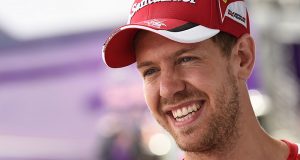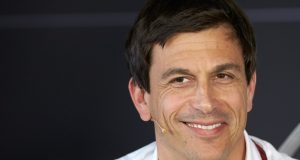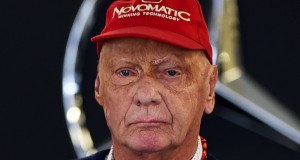 The Renault F1 Team looks ahead to this weekend’s Monaco Grand Prix.
The Renault F1 Team looks ahead to this weekend’s Monaco Grand Prix.
Robert Kubica: “I enjoy street circuits and I’ve always gone well in Monaco”
Robert, you scored points last weekend in Spain, but you ended the race a bit disappointed…
It was a bit frustrating because I had a difficult first lap and lost three places, which affected the rest of my race. I also made contact with Kobayashi, which damaged my car and gave me a lot of understeer. Even with the damage, I was surprised that my pace was not too bad and I was able to follow Sutil closely after my pit stop. But it’s so difficult to overtake in Barcleona and there was no chance to get by him. Although it was encouraging to see our pace during the weekend, especially compared to Mercedes, I felt that we should have come away with more points.
Looking ahead to Monaco, is it a race you enjoy and what are your expectations for the weekend?
I always enjoy street circuits, especially Monaco, and I’ve always gone well there. There are aspects of Monaco that are both positive and negative for our car, so it’s difficult to know how competitive we will be until free practice begins on Thursday. Also, as we saw in Barcelona, qualifying is going to be the most important part of the weekend because overtaking is even more difficult in Monaco. If you want to score good points you need to qualify towards the front and avoid any mistakes.
What is the secret to a good set-up in Monaco?
It’s all about having a car that is reactive and easy to drive. To find those final few tenths you need a car that gives you the confidence to really push to the limit and almost kiss the barrier with your tyres. I expect it will be even more challenging to drive Monaco this year with a full tank of fuel because the car will become less reactive. The tunnel used to be taken flat, but with heavy fuel I expect it will be much more of a challenge.
Vitaly Petrov: “Each race teaches me something new”
Vitaly, in Spain you completed your first dry race. How was the weekend from your perspective?
It was a weekend with positives and negatives, and another race that taught me a lot. It was very important for me to complete the race and get some more experience of the car in dry conditions – how the balance changes during the race and how to manage the tyres. The car felt consistent and the pace was good, but it was always going to be difficult to score points because overtaking is so difficult there. I had a good battle with Kobayashi for most of the race and managed to stay ahead of him, but I was disappointed to just miss out on points.
Has adapting to Formula 1 been as challenging as you expected it to be?
The most difficult thing is to put together the perfect weekend, and I think that comes down to experience. You need to get the most from the car in every session and you can’t afford to make any mistakes because it affects your entire weekend. That’s why races like Spain are an important part of my learning curve and I certainly feel more confident now that I have completed a full race distance in the dry. I know there are lots of areas where I can still improve and that it’s important to spend as much time as I can with my engineers to try and understand everything about the car. Each race teaches me something new and is another chance to improve.
We now head to Monaco this weekend – is it a track you enjoy?
I’m really looking forward to Monaco and driving an F1 car there for the first time. I enjoyed the track in GP2 and I’m sure it will be even better in my F1 car. But I know it will be a difficult race too because it’s a street circuit and there’s no room for error. Also, overtaking is almost impossible in Monaco so qualifying will be very important, and it won’t be easy with so many cars on the circuit, especially in Q1. I think to complete just one clean flying lap will be a good achievement. More than anything, it’s important not to make any mistakes if we want to finish in the points.
Steve Nielsen: “We’re looking forward to Monaco and feeling confident”
Steve, after three strong races, the team came away from Barcelona with just four points. What was your verdict on the weekend?
The verdict is pretty simple: we were pleased with qualifying, but less so with the race result. Vitaly’s accident in third practice was unfortunate, because it left him on the back foot going into qualifying: he lost track time, and also suffered a five-place grid penalty after his gearbox was changed to repair the damage. As for Robert, he did an excellent job to qualify seventh, and from there we were hoping for a good solid points finish. Unfortunately, he didn’t have the greatest first lap, and it’s more important than ever under this year’s regulations. It’s a shame to say it but you’re basically reliant on others making mistakes after lap two – and especially in Barcelona where overtaking is so difficult.
The team demonstrated its quality once again this weekend: they did a herculean job to repair Vitaly’s car for qualifying, and both drivers made up ground at the pit stops…
It’s hard to praise the team enough for the job they did this weekend. They worked into the small hours on both Thursday and Friday nights in order to prepare the cars, and fit the latest developments to them; they did a brilliant job to repair Vitaly’s car between practice and qualifying; then they delivered flawless pit stops during the race. It’s a great credit to everybody involved.
Rival teams announced major developments for this race, but in qualifying the team seemed to have maintained its competitive position. Was that a source of satisfaction?
We were very pleased after qualifying. It’s no secret that we had a difficult test here during the winter, and we were all a little apprehensive ahead of the race weekend. But the car performed well. Of course, it was a shame to do well in qualifying, to race so hard and only score a handful of points. But I think we can be optimistic that we have a car capable of racing strongly at every circuit.
The cars will be back in action in Monaco on Thursday. What are your expectations?
We’re looking forward to Monaco and feeling confident. Robert’s driving fantastically well, while Vitaly is getting stronger with every race as he gains experience. But more than ever, Monaco will be about qualifying and the start.
Traffic is a notorious problem there. Are you expecting a busy time on the pit wall?
I think it’s first qualifying that everybody is dreading, with 24 cars out on track and some big performance differentials between the fastest and slowest. The challenge will just be to get a clear lap. But it will be a real lottery, and some big names could easily go out in Q1.
Is it an extra challenge that the race is a back-to-back?
Back-to-backs are tough enough anyway but when Monaco’s the second race of the two, everything’s got to be ready a day earlier because we practice on Thursday. That makes a steep hill just a little bit steeper. It was a bit of a breakneck 24 hours to get the team and equipment to Monaco, but everybody is now working hard to make sure we’re ready to go in first practice on Thursday morning.
Robert Kubica’s guide to Monaco
I always enjoy racing in Monaco and I’m a big fan of street circuits because I think they give the drivers more opportunity to show their skill. I’ve always gone well there, and I finished on the podium in 2008, so I’m looking forward to this year’s race.
Without a well-balanced car, Monaco is tough. You need a smooth car that is driveable because the circuit is so tight and bumpy. Once the car is balanced, you can really push to the limit and go through the corners just centimetres from the barriers. Unlike most of the modern circuits, there is no margin for error and you have to respect the walls because there is very little run-off area.
Because you are constantly in a corner and the walls are so close, it’s a very demanding race for the drivers – not physically, but mentally. Most circuits usually have a long straight where you can relax for a few seconds, but in Monaco you are constantly busy.
Like most street circuits, overtaking in Monaco is almost impossible. Part of the reason for this is the low grip levels, and although the track improves during the weekend, you need to stick to the racing line. Also, a lot of the braking zones are bumpy and, unless you make a mistake, it’s impossible for anybody to get by you.
The first corner is one of the few parts of the lap where there is some run-off and we usually see a lot of cars running wide there. It’s a very difficult corner to get right, and it’s really tight on the first lap, especially if you’re starting near the back of the grid as I did last year. In the opening laps I had to back off on the straight approaching turn one because there was such a bottleneck.
The tunnel is the fastest section and used to be taken easily flat, but this year it should be more challenging with a heavy fuel load in the early laps of the race. In fact, the whole lap will become even tougher with a heavy car because it will make the car less reactive.
The Swimming Pool chicane [turns 13 and 14] is a part of the lap where you really need a well-balanced car. It’s very high speed, taken in fifth gear and you have to attack the kerbs and change direction very quickly. It’s an exciting part of the lap, but it’s easy to get the car bouncing in a bad way, and if you get it wrong there’s no escape from the barriers.
Midnight run: a race against the clock
When the 2010 race calendar was published last year, the news that the Spanish and Monaco Grands Prix were to be held on consecutive weekends caught the attention of every team manager up and down the pit lane. Back-to-back races are always a challenge, but add Monaco into the mix and the whole business becomes even more complicated.
That’s because Monaco is a bit different to every other race on the calendar. For starters, it begins a day earlier with the cars rolling out for free practice on Thursday morning. Also, space is at a premium, and shoehorning the trucks into the tight confines of the Monaco harbour means there’s always a big queue on the tight and twisty road leading into the principality.
The first challenge facing the team was to get the cars from Barcelona to Monaco as quickly as possible, as Race Team Coordinator, Geoff Simmonds, explains: “Because time was so short between these two races, we implemented some new tactics in order to make sure we arrived in Monaco in plenty of time. We arranged a sleeper coach to leave Barcelona on Sunday night, around midnight, taking the support crew to Monaco. These guys arrived early on Monday morning, along with the trucks, and got straight down to work setting up the garage and support networks.”
The rest of the mechanics and engineers had a more leisurely drive to Monaco and arrived on Monday evening so that they were ready to start working on the cars on Tuesday. But, as Chief Mechanic, Gavin Hudson, confirms, the team had its work cut out on Sunday evening to ensure the cars were ready for the midnight departure from Barcelona: “To save time on Sunday we introduced a new service procedure between these two races. Normally all the suspension parts would be stripped off the car and returned to Enstone for inspection, but instead we serviced all the parts in situ on the car. This helped us get the cars packed away quicker and on their way to Monaco.”
Another complicating factor the team has to cope with is the introduction of a new motorhome to coincide with the start of the European season. It’s bigger than the old version and far more complicated to assemble and pack down. To deal with this the team brought in some reinforcements from Enstone to assist the regular crew of eight, who would normally do all the heavy lifting on their own. This meant the motorhome was dismantled by daybreak on Monday and on its way to Monaco. All being well the motorhome crew will have two full days on Tuesday and Wednesday to build it back up again ready for Thursday.
© RIF | Renault F1 Team
 Racing In Focus Motorsport and Events Coverage | Racing News, Results, Photos.. from Formula 1, American Le Mans, NASCAR, IndyCar and Canadian racing
Racing In Focus Motorsport and Events Coverage | Racing News, Results, Photos.. from Formula 1, American Le Mans, NASCAR, IndyCar and Canadian racing



